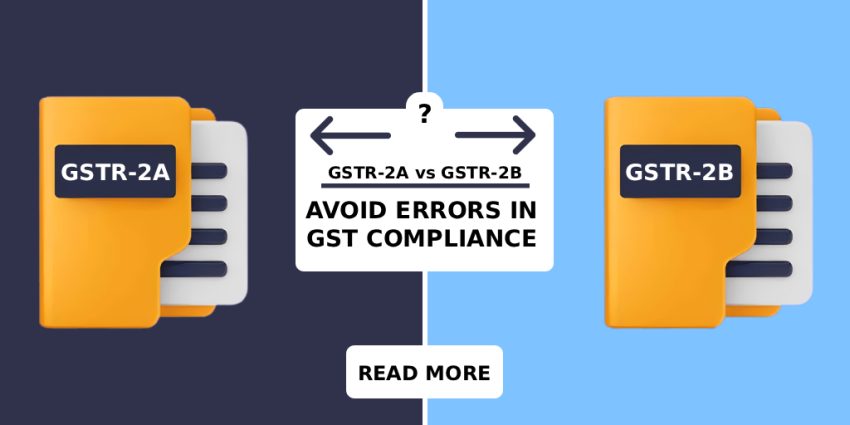GST system in India has introduced considerable changes in the way business manages compliance and input tax credit (ITC). Out of the various forms/payments that are introduced under GST, GSTR-2A and GSTR-2B tend to confuse the taxpayers. Both are associated with ITC claims but are used to different ends. Learning the difference between GSTR 2A and 2B is quite crucial in the context of filing the returns accurately and not creating any gaps.
What is GSTR-2A?
GSTR-2A is an ever-changing declaration that indicates the specifics of the such-in deliveries of goods and services. It is automatically created based on the data reported by suppliers in their GSTR-1, GSTR-5, or GSTR-6. As it is dynamic, it will always change whenever the suppliers update it, add invoices, or make corrections. GSTR-2A is not a fixed statement and can be used by businesses as a form of cross-checking to reveal erroneous uploads of invoices by their suppliers.
What is GSTR-2B?
GSTR-2B on the other hand is a fixed statement created on a particular date in each month. It includes the ITC information that a taxpayer receives of a specific tax period. Unlike GSTR-2A, it does not without transform later and businesses will have a clear and final picture of the ITC that they are able to claim in their returns. Such stability allows GSTR-2B to be more reliable in the filing of GSTR-3B.
Key Difference Between GSTR-2A and 2B
To make compliance easier, here are some of the major points of distinction:
- Nature of the Statement – GSTR-2A is a dynamic statement that gets updated whenever suppliers upload or amend invoices, while GSTR-2B is a static statement that remains unchanged once generated.
- Purpose– GSTR-2A would be utilized to reconcile invoices on them whereas GSTR-2B would be used to ascertain a claimable amount of ITC in each tax period.
- ITC Claim– ITC cannot be directly claimed against GSTR-2A which continues to change and GSTR-2B is a final snapshot of the ITC available to claim.
- Timing – GSTR-2A updates in real time with each supplier filing, whereas GSTR-2B is generated once a month on a fixed date.
Understanding the difference between GSTR 2A and 2B helps businesses avoid errors during ITC claims and ensures better compliance with GST rules.
Which One Should Businesses Rely On?
Businesses must also utilize GSTR-2A, to track the uploaded invoices of suppliers, in case of a nexus of reconciliation. However, for filing returns and claiming ITC in GSTR-3B, GSTR-2B is preferred as it is a fixed statement not affected by last-minute changes.
Importance of Reconciliation
Although GSTR-2B is a summary of ITC, reconciling it with GSTR-2A is also significant. Suppliers can chronically delay the filing or make corrections that come into GSTR-2A but are not reflected in GSTR-2B that month. This will not make any future period to miss any invoices.
Conclusion
The distinction between GSTR 2A and 2 B is in respect of purpose, nature and reliability. GSTR-2A is a running account of all suppliers owned document whereas GSTR-2B acts as a fixed statement to claim ITC. This difference should be known by business to ensure correctness of GST compliance. Through the reconciliation of the two, businesses can have an allowable ITC without endangering their compliance.
This content is meant for information only and should not be considered as an advice or legal opinion, or otherwise. AKGVG & Associates does not intend to advertise its services through this.
Also Read: Common Errors in GST Audits and Ways to Prevent Them

